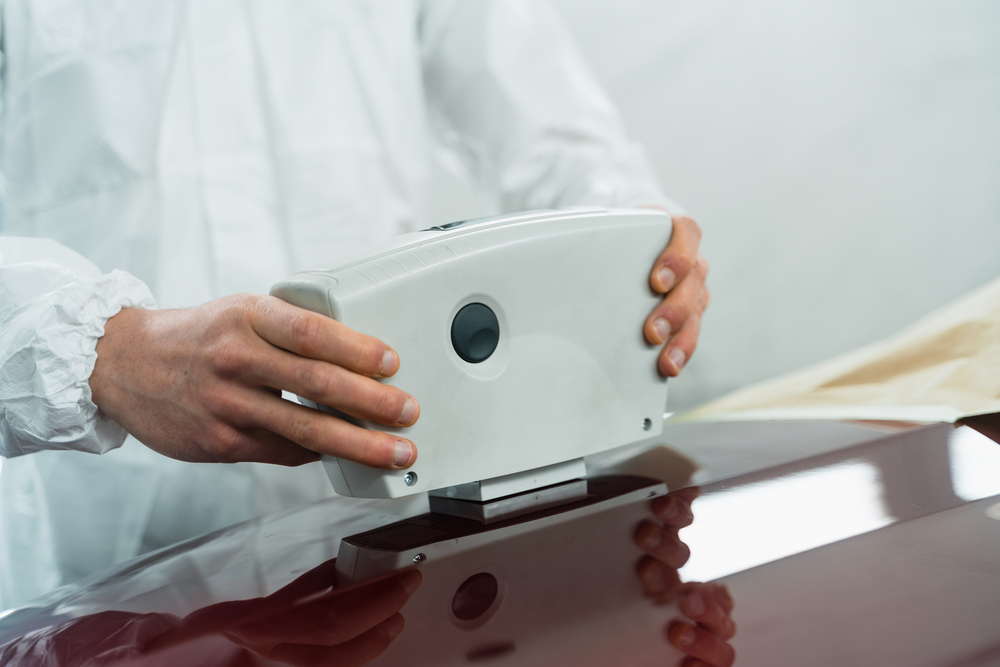When you have experienced an accident, you want things to return to normal as quickly as possible. This includes the exterior of your car. Ideally, you want your car to look exactly as it did before the damages from the crash, whether because of the trade-in value or sentimentality. A major portion of the repairs is going to belong to paint repairs.
Post-accident repair requires the technician to match the color of your vehicle and repaint the damaged portions without needing to repaint everything. In other words, the colors must be matched perfectly, or you’ll be driving away with a patchwork car. While this might not bother some people, others are going to want nothing less than seamless repair. For that, auto body shops use a machine called a spectrophotometer to get the perfect color match.
Common Challenges in Auto Paint Matching
When a damaged vehicle arrives at the auto body repair shop, one of the first things the technician does is look at the paint. Cars usually have base colors that are listed on the spec sheet, and you can often find the color code somewhere within the vehicle, like on the inside of the driver side door. However, the paint is going to fade a little, based on aging and the environment.
This means that relying on the base color might not yield a perfect color match. When that happens, the auto body repair shop has to do one of the following:
- Deal with the mismatched color. If the paint is going to be somewhere that is unnoticeable, the client might be willing to accept the slight mismatch. This is the least desirable option, however, because it makes the repairs obvious.
- Create a custom color. While challenging, this is an aesthetically pleasing option. It’s also time-consuming, moderately expensive, and may require trial and error before the color is correct. This is made more difficult when performed with a visual color matching assessment.
- Repaint the entire vehicle. If the mismatch is going to be very noticeable, the body shop might decide to repaint the whole vehicle. However, this is problematic. The customer or—more likely—the insurance company is not going to want to pay the cost.
You may have already guessed that only one of these three options is truly acceptable—the custom color. Now, while it’s the best alternative, it also introduces a high risk of error. Even a small variation in the new paint will be noticeable and, worse, unsatisfactory. Auto body repair shops are committed to delivering the best experience, so rather than guessing what goes into a customized color, they use a modern spectrophotometer to color match correctly.
What is a Spectrophotometer?
A spectrophotometer is a device that was created to measure electromagnetic energy at a specific wavelength of light. The device then uses that energy and light to determine the colors present.
In other words, a spectrophotometer measures how much a substance or color reflects or absorbs light. While people might think of car paint as either blue or white or glossy or matte, the spectrophotometer breaks down those characteristics even further.
How Do Spectrophotometers Work?
The basic function of a spectrophotometer is to quantify the absorption of photons. The more photons present, the more intense the light. There are two parts of the spectrophotometer—the spectrometer and the photometer—that perform individual tasks:
- Spectrometer: Uses a lens to split a prism into individual wavelengths. A typical spectrophotometer can measure 31 wavelengths within a 300nm-wide range. More expensive versions can read over 150 bands of light within an 800nm-wide range.
- Photometer: A device that counts the number of photons absorbed before sending the calculation to a digital display. The intensity of each group is measured on a scale of 0-100.
Combined, the spectrophotometer generates data about the colors and wavelengths involved. You can then take that data and determine which color of paint was used on a vehicle.
How Spectrophotometers Help With Auto Paint Color Matching
Now that you know about how spectrophotometers work, you can see how these devices can assist with limiting the trial and error with color matching. Auto repair shops have portable spectrophotometers that work much more quickly and accurately than visual color matching. Even if the car has customized or vintage paint, the spectrophotometric color measurement works quickly and efficiently.
The process for using a spectrophotometer involves:
- Cleaning the panel that needs to be color-matched. Dust and dirt have to be removed completely. Otherwise, it will throw off the spectrophotometric color measurement.
- Taking several readings with the spectrophotometer. The technician will take multiple readings to get a precise result on the auto paint color.
- Testing sample colors based on the results. After finding the exact shade of the paint, the technician will mix up a few samples of paint and test that color against the vehicle to ensure the correct match.
As you can see, a portable spectrophotometer streamlines the color matching process while increasing accuracy. This is a useful tool, and if you need your vehicle repainted, ask the auto body shop if they have one of these devices on hand.
Wrapping Up
Spectrophotometers are an innovative way to mix auto paint colors even when that color is no longer commercially available. This means that even antique motor vehicles can be repaired without having a damaged exterior. Essentially, a spectrophotometer allows an auto body repair shop to return a vehicle to as close to its pre-accident condition as possible.

